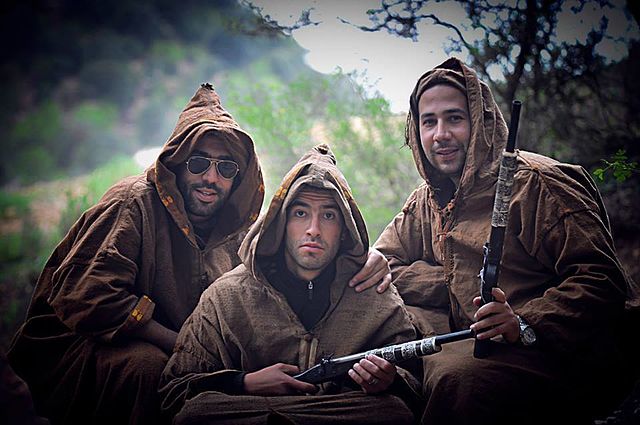Qashabiya: Difference between revisions - Wikipedia
 Article Images
Article Images
Content deleted Content added
Tags: Reverted Visual edit |
Skitash 9,633 edits |
||
Line 1: {{Infobox clothing type|name=Kashabiya قشابية|image_file=سكان آريس.jpg|image_size=|caption=Men wearing the qashabiya|type=|material=[[Camel hair]] and [[wool]]|location=[[Algeria]]|manufacturer=|url=}}The '''qashabiya''' ({{Lang-ar|القشابية}}) is a traditional [[ It also holds significant importance in the Algerian [[collective memory]], as it, along with the burnous, represents the attire of the [[ == Etymology == Line 13: These regions form a cultural and ethnic continuum based on an Arab and [[Bedouin]] society whose primary activity remains pastoralism and camel breeding.<ref name=":0">{{cite web |access-date=2024-01-21 |author1=M. El Moujabber |author2=H. Belhouchette |author3=M. Belkhodja |author4=P. Kalaïtzis |author5=R. Cosentino |author6=W. Occhialini |title=Research and innovation as tools for sustainable agriculture, food and nutrition security : extended abstracts and papers |url=https://www.cjoint.com/c/NAvpqFqfUvJ |website=www.cjoint.com}}<!-- auto-translated from French by Module:CS1 translator --></ref> The geographic space of the Qashabiya corresponds to that of the arid and dry plateaus of the [[Saharan Atlas]] where winters and nights are harsh. It is a region mainly inhabited by Arab tribes, the Sehari, [[Hamyan]], [[Ouled Naïl|Ouled Nail]], Rahman, and 'Umur, renowned for their expertise in camel domestication and the exploitation of their [[wool]]. To speak of the qashabiya is to raise the question of the place of the camel in [[North Africa|North African]] culture. Indeed, camel wool, called al-Wabr (الوبر) in Arabic, occupies a central place in Algerian craftsmanship inherited from the country's Bedouin traditions. The use of al-Wabr by Arabs to protect themselves from the cold is ancient and varied. It is found in most male attire of the [[Mashriq|Mashreq]] and rural [[Maghreb]]. Names of cities and places such as 'Ain Al-Ibl (Djelfa) or 'Ain Al-Nagah (Biskra) testify to the importance of the camel in the cultural landscape of the Algerian High Plateaus. This wool is harvested by nomads during shearing and is used for the manufacture of burnouses, tents, qashabiya, and other clothing. Sheep wool (as-Sawf) is sometimes added to this hair in the qashabiya manufacturing process.<ref name=":0" /> | |||